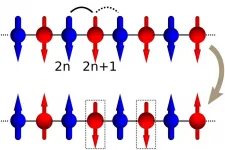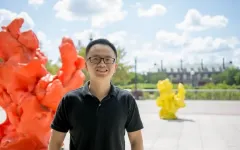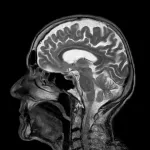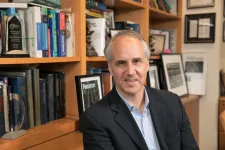INFORMATION:
About San Diego Zoo Global
As a leader in conservation, the work of San Diego Zoo Global includes on-site wildlife conservation efforts (representing both plants and animals) at the San Diego Zoo, San Diego Zoo Safari Park, and San Diego Zoo Institute for Conservation Research, as well as international field programs on six continents. The work of these entities is made accessible to over 1 billion people annually, reaching 150 countries via social media, our websites and the San Diego Zoo Kids network, in children's hospitals in 12 countries. The work of San Diego Zoo Global is made possible with support from our incredible donors committed to saving species from the brink of extinction.
Stem cells provide hope for dwindling wildlife populations
2021-02-22
(Press-News.org) A paper recently published in the scientific journal Stem Cells and Development shares an important advancement in conservation -- one that may make the difference between survival and extinction for wildlife species that have been reduced to very small population sizes. Using fibroblast cells that have been preserved in San Diego Zoo Global's Frozen Zoo®, scientists have been able to generate induced pluripotent stem cells of northern and southern white rhinoceroses. This important breakthrough is the first step in a complex process for generating gametes from deceased and non-reproductive individuals of these two subspecies.
"For the northern white rhino, which is functionally extinct, the only hope for survival may be in the creation of gametes from cells that were frozen in our labs decades ago," said Marisa Korody, Ph.D., lead author of the study and northern white rhino genetics scientist for San Diego Zoo Global. "What we have just done is taken the first step towards being able to bring this subspecies back to life."
San Diego Zoo Global has fibroblast cell lines from 12 individual northern white rhinos preserved in its Frozen Zoo®. It is thought that the genetic diversity in those frozen samples may be enough to bring the species back from the brink of extinction using this new advancement. However, scientists point out that this emerging technology can only be used if the living cells from critically endangered wildlife species are saved for the future.
"When Dr. (Kurt) Benirschke created the Frozen Zoo more than 40 years ago, we did not know how important it might be for the future," said Oliver Ryder, Ph.D., director of Conservation Genetics at San Diego Zoo Global. "As species are placed increasingly at risk, we now recognize that what we have may be the key to saving these species. However, we will not be able to offer this technology unless we have saved cell lines the way we did with the northern white rhino."
ELSE PRESS RELEASES FROM THIS DATE:
Researchers create 'beautiful marriage' of quantum enemies
2021-02-22
ITHACA, N.Y. - Cornell University scientists have identified a new contender when it comes to quantum materials for computing and low-temperature electronics.
Using nitride-based materials, the researchers created a material structure that simultaneously exhibits superconductivity - in which electrical resistance vanishes completely - and the quantum Hall effect, which produces resistance with extreme precision when a magnetic field is applied.
"This is a beautiful marriage of the two things we know, at the microscale, that give electrons the most startling ...
Lack of symmetry in qubits can't fix errors in quantum computing, might explain matter/antimatter
2021-02-22
LOS ALAMOS, N.M., Feb. 22, 2021--A team of quantum theorists seeking to cure a basic problem with quantum annealing computers--they have to run at a relatively slow pace to operate properly--found something intriguing instead. While probing how quantum annealers perform when operated faster than desired, the team unexpectedly discovered a new effect that may account for the imbalanced distribution of matter and antimatter in the universe and a novel approach to separating isotopes.
"Although our discovery did not the cure the annealing time restriction, it brought a class of new physics problems that can now be studied with quantum annealers without requiring they be too slow," said Nikolai Sinitsyn, a theoretical physicist at Los Alamos National ...
Campaign promises more likely to be kept by governments run by women, research shows
2021-02-22
HOUSTON - (Feb. 22, 2021) - Governments with strong female representation are more likely to deliver on campaign promises, according to new research from Rice University.
"The Effects of Women's Descriptive Representation on Government Behavior" by author Jonathan Homola, an assistant professor of political science at Rice, examines campaign promises and subsequent policymaking by parties in power in 10 European countries, the United States and Canada along with data on women in party leadership and elected offices.
The study also showed that promises are even more likely to be kept when women in government assume leadership roles.
Homola said the research demonstrates the importance of women playing part in the ...
CABBI researchers challenge the CRP status quo to mitigate fossil fuels
2021-02-22
Researchers at the Center for Advanced Bioenergy and Bioproducts Innovation (CABBI) found that transitioning land enrolled in the Conservation Reserve Program (CRP) to bioenergy agriculture can be advantageous for American landowners, the government, and the environment.
Land enrolled in the CRP cannot currently be used for bioenergy crop production, wherein high-yielding plants (like miscanthus and switchgrass) are harvested for conversion into marketable bioproducts that displace fossil fuel- and coal-based energy. Established by the U.S. Department of Agriculture in 1985, the CRP incentivizes landowners to retire environmentally ...
International study finds increased COVID-19 mortality among adults with Down syndrome
2021-02-22
A new study by an international team of researchers found that adults with Down syndrome are more likely to die from COVID-19 than the general population, supporting the need to prioritize vaccinating people with the genetic disorder.
Investigators found that adults with Down syndrome were roughly three times more likely to die from COVID-19 than the general population. This increased risk was especially apparent in from fifth decade of life: A 40-year-old with Down syndrome had a similar risk of dying from COVID-19 as someone 30 years older in the general population.
The study was published this week in The Lancet's ...
Stroke of luck: Scientists discover target for stroke therapy in blood-brain barrier
2021-02-22
Strokes are a leading cause of poor quality of life or even death in Japan and the world over. Since its characterization, several researchers have been working tooth and nail to identify drug-accessible and effective therapeutic targets for this debilitating condition. One such region of interest for drug targets is the blood-brain barrier (BBB).
The BBB is a structure located around the brain, which prevents the entry of unnecessary circulating cells and biomolecules into the brain. The blood vessels in the BBB are coated with a distinct and protective layer of sugar, called the endothelial glycocalyx, which prevents their entry. However, in the event of a stroke, which results in the blockage or severance of blood vessels in the brain, studies have shown that this ...
Twist-n-Sync: Skoltech scientists use smartphone gyroscopes to sync time across devices
2021-02-22
Skoltech researchers have designed a software-based algorithm for synchronizing time across smartphones that can be used in practical tasks requiring simultaneous measurements. This algorithm can essentially help turn several devices into a full-fledged network of sensors. The paper was published in the journal Sensors.
If you want a network of intelligent devices - say, an array of cameras capturing a dynamic scene or another kind of network of sensors - to work properly, one of the fundamental tasks you have to solve is clock synchronization: all devices should have the same timeline, often up to sub-millisecond for the more challenging tasks. Modern smartphones can easily be used as multipurpose ...
Female heart disease patients with female physicians fare better
2021-02-22
Female physicians have better patient outcomes compared with their male peers, while female patients are less likely to receive guideline-recommended care when treated by a male physician, according to a systematic review from the American College of Cardiology's Cardiovascular Disease in Women section published today in the Journal of the American College of Cardiology.
While women make up over 50% of internal medicine residents, only 12.6% of cardiologists are female. A dedicated effort to increase diversity in the cardiovascular field could help to lower implicit bias, often considered an important factor in health care disparities.
In a detailed systematic review, researchers looked at 13 studies ...
Brain organoids grown in lab mature much like infant brains
2021-02-22
A new study from UCLA and Stanford University researchers finds that three-dimensional human stem cell-derived organoids can mature in a manner that is strikingly similar to human brain development.
For the new study, published in Nature Neuroscience February 22, senior authors Dr. Daniel Geschwind of UCLA and Dr. Sergiu Pasca of Stanford University conducted extensive genetic analysis of organoids that had been grown for up to 20 months in a lab dish. They found that these 3D organoids follow an internal clock that guides their maturation in sync with the timeline of human development.
"This is novel -- Until now, nobody has grown and characterized these organoids for this amount ...
For breakthroughs in slowing aging, scientists must look beyond biology
2021-02-22
A trio of recent studies highlight the need to incorporate behavioral and social science alongside the study of biological mechanisms in order to slow aging.
The three papers, published in concert in Ageing Research Reviews, emphasized how behavioral and social factors are intrinsic to aging. This means they are causal drivers of biological aging. In fact, the influence of behavioral and social factors on how fast people age are large and meaningful. However, geroscience--the study of how to slow biological aging to extend healthspan and longevity--has traditionally not incorporated ...




